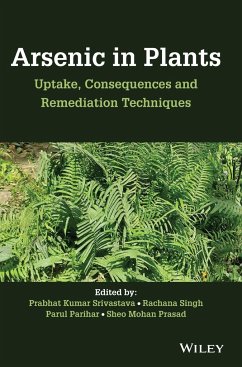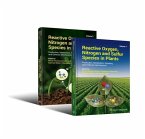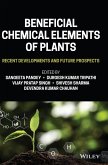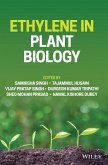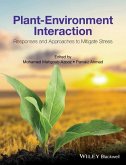Arsenic in Plants
Comprehensive resource detailing the chemistry, toxicity and impact of arsenic in plants, and solutions to the problem
Arsenic in Plants: Uptake, Consequences and Remediation Techniques provides comprehensive coverage of the subject, detailing arsenic in our environment, the usage of arsenicals in crop fields, phytotoxicity of arsenic and arsenic's impact on the morphology, anatomy and quantitative and qualitative traits of different plant groups, including their physiology and biochemistry. The work emphasizes the occurrence of arsenic, its speciation and transportation in plants, and differences in mechanisms of tolerance in hyper-accumulator and non-accumulator plants.
Throughout the text, the highly qualified authors delve into every facet of the interaction of arsenic with plants, including the ionomics, genomics, transcriptomics and proteomics in relation to arsenic toxicity, impact of exogenous phytohormones and growth-regulating substances, management of arsenic contamination in the soil-plant continuum, phytoremediation of arsenic toxicity and physical removal of arsenic from water. General discussion has also been included on subjects such as the ways through which this metalloid affects plant and human systems.
Topics covered include:
_ Introduction and historical background of arsenic and the mechanism of arsenic transport and metabolism in plants
_ Arsenic-induced responses in plants, including impact on biochemical processes and different plant groups, from cyanobacteria to higher plants
_ The role of phytohormones, mineral nutrients, metabolites and signaling molecules in regulating arsenic-induced toxicity in plants
_ Genomic, proteomic, metabolomic, ionomic and transcriptional regulation during arsenic stress
_ Strategies to reduce the arsenic contamination in soil-plant systems and arsenic removal by phytoremediation techniques
Researchers, academics, and students of plant physiology, biotechnology, and agriculture will find valuable information in Arsenic in Plants to understand this pressing subject in full, along with its implications and how we can adapt our strategies and behaviors to promote reduced contamination through practical applications.
Hinweis: Dieser Artikel kann nur an eine deutsche Lieferadresse ausgeliefert werden.
Comprehensive resource detailing the chemistry, toxicity and impact of arsenic in plants, and solutions to the problem
Arsenic in Plants: Uptake, Consequences and Remediation Techniques provides comprehensive coverage of the subject, detailing arsenic in our environment, the usage of arsenicals in crop fields, phytotoxicity of arsenic and arsenic's impact on the morphology, anatomy and quantitative and qualitative traits of different plant groups, including their physiology and biochemistry. The work emphasizes the occurrence of arsenic, its speciation and transportation in plants, and differences in mechanisms of tolerance in hyper-accumulator and non-accumulator plants.
Throughout the text, the highly qualified authors delve into every facet of the interaction of arsenic with plants, including the ionomics, genomics, transcriptomics and proteomics in relation to arsenic toxicity, impact of exogenous phytohormones and growth-regulating substances, management of arsenic contamination in the soil-plant continuum, phytoremediation of arsenic toxicity and physical removal of arsenic from water. General discussion has also been included on subjects such as the ways through which this metalloid affects plant and human systems.
Topics covered include:
_ Introduction and historical background of arsenic and the mechanism of arsenic transport and metabolism in plants
_ Arsenic-induced responses in plants, including impact on biochemical processes and different plant groups, from cyanobacteria to higher plants
_ The role of phytohormones, mineral nutrients, metabolites and signaling molecules in regulating arsenic-induced toxicity in plants
_ Genomic, proteomic, metabolomic, ionomic and transcriptional regulation during arsenic stress
_ Strategies to reduce the arsenic contamination in soil-plant systems and arsenic removal by phytoremediation techniques
Researchers, academics, and students of plant physiology, biotechnology, and agriculture will find valuable information in Arsenic in Plants to understand this pressing subject in full, along with its implications and how we can adapt our strategies and behaviors to promote reduced contamination through practical applications.
Hinweis: Dieser Artikel kann nur an eine deutsche Lieferadresse ausgeliefert werden.
